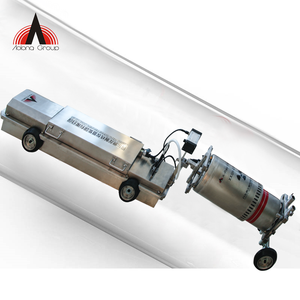
Finest Practices for Pipe Welding Evaluation: Methods, Specifications, and Procedures to Attain Top Quality Guarantee and Compliance
Reliable pipeline welding assessment is necessary for guaranteeing the honesty and safety of critical framework. By utilizing a mix of techniques such as aesthetic assessment and progressed non-destructive testing methods, along with adherence to developed sector standards like those from ASME and AWS, organizations can considerably enhance their high quality guarantee processes. Nevertheless, the execution of these best methods positions different difficulties that warrant careful factor to consider. Recognizing the intricacies associated with each phase of inspection is crucial to achieving conformity and dependability in pipeline systems. What particular methods can be employed to navigate these challenges successfully?
Significance of Welding Inspection
The honesty of bonded joints is critical in guaranteeing the safety and security and dependability of pipeline systems. Proper welding methods and extensive examination processes are important to stop failures that can result in devastating incidents, ecological damages, and loss of life. Pipeline Welding Inspection. Welding inspection serves as a preventive step, identifying flaws such as cracks, porosity, and insufficient combination prior to they escalate into significant concerns
In addition, pipeline systems typically operate under high pressure and extreme problems, making the high quality of welds even more essential. Regulative conformity is one more substantial facet, as different requirements determine the quality control procedures that should be stuck to in pipe building and upkeep. Failing to abide can lead to legal ramifications and economic losses.

The duty of welding inspection expands past mere verification of workmanship; it encompasses the assurance of long-term functional integrity. This entails a systematic method that includes not only visual examinations but also progressed non-destructive screening techniques. Inevitably, reliable welding evaluation is an investment in the durability and security of pipeline systems, guaranteeing they operate as planned while minimizing risks connected with product deficiencies.
Secret Evaluation Methods

Visual evaluation, typically the very first line of defense, permits the recognition of surface defects such as fractures, damages, and porosity. Ultrasonic screening employs high-frequency acoustic waves to find interior imperfections, offering a comprehensive evaluation of weld honesty. This non-destructive method is particularly reliable for recognizing stoppages that might not be noticeable on the surface.
Radiographic screening involves making use of X-rays or gamma rays to produce pictures of the bonded joint, exposing internal flaws. This technique supplies detailed understandings but might need customized equipment and security considerations. Finally, magnetic bit screening works for finding surface area and near-surface interruptions in ferromagnetic materials, using electromagnetic fields and fine iron particles.
Industry Standards and Laws
Conformity with market requirements and regulations is essential for ensuring the quality and safety of pipe welding examinations. These requirements give a structure for ideal methods in welding procedures, materials, and inspection strategies, enabling organizations to decrease defects and boost the honesty of pipeline systems. Trick bodies such as the American Society of Mechanical Engineers (ASME), the American Welding Culture (AWS), and the International Organization for Standardization (ISO) collection forth standards that are commonly recognized and embraced within the industry.
In the USA, guidelines from the Pipeline and Hazardous Materials Safety And Security Administration (PHMSA) control the security of pipe operations, mandating rigorous examination procedures. These criteria not only serve to secure public safety and the atmosphere yet likewise ensure compliance with lawful and legal obligations. Adherence to the pertinent codes, such as ASME B31.3 for process piping, is vital for keeping operational effectiveness and Get the facts regulatory compliance.
In addition, continual updates and alterations to these requirements reflect technical developments and evolving market methods, highlighting the demand for organizations to remain informed and train workers as necessary. Inevitably, robust compliance with recognized criteria cultivates count on and dependability in pipe infrastructure, protecting both stakeholders and properties.
Effective Evaluation Procedures
Efficient examination procedures are important for recognizing potential problems in pipeline welds and making certain the overall integrity of the system. A methodical technique to examination incorporates several key stages, including pre-weld, in-process, and post-weld evaluations. Each phase plays a crucial duty in keeping quality control.
During pre-weld evaluation, it is necessary to evaluate the materials and joint arrangements, making certain conformity with project specifications. In-process evaluations entail monitoring welding strategies and criteria, such as warmth input and travel speed, to prevent defects from occurring. learn this here now This phase permits real-time modifications to welding methods.
Post-weld evaluations include non-destructive screening (NDT) methods like radiography, ultrasonic testing, and magnetic particle testing. These approaches assist discover internal and surface area flaws that can endanger the pipeline's functionality. Documentation of all inspection tasks is vital, offering a deducible record that sustains conformity with market criteria.
Training and certification of examination workers further boost the effectiveness of these treatments. By sticking to a structured inspection procedure, organizations can reduce threats, ensure conformity, and eventually supply pipelines that satisfy stringent safety and security and performance needs.
Typical Obstacles and Solutions
Pipeline welding evaluation offers several usual obstacles that can impact the top quality and safety of the end product. One considerable obstacle is the irregularity in welding techniques and products, which can lead to irregular weld high quality. To resolve this, it is critical to develop standard procedures and training for welders, making certain an uniform technique throughout projects.

Ecological elements, including temperature level and humidity, can additionally impact the welding process, possibly causing fractures or insufficient fusion. Implementing regulated atmospheres and adhering to pre-weld procedures can minimize these threats.
Verdict
In final thought, the implementation of ideal methods for pipeline welding evaluation is essential for making certain quality control and conformity with market criteria. An extensive approach, integrating numerous methods such as visual, ultrasonic, and radiographic screening, helps with the recognition of flaws throughout all stages of the welding procedure. Pipeline Welding Inspection. Adherence to established laws and efficient inspection treatments not only improves the reliability and safety and security of pipeline systems my link however additionally reduces threats connected with welding problems, therefore promoting total operational honesty
Compliance with sector standards and guidelines is vital for making sure the quality and security of pipe welding evaluations. These requirements provide a framework for ideal techniques in welding processes, materials, and examination techniques, enabling companies to minimize problems and boost the stability of pipe systems.In the United States, laws from the Pipe and Hazardous Materials Safety Administration (PHMSA) regulate the safety and security of pipe procedures, mandating rigorous inspection protocols. A methodical technique to inspection includes several crucial phases, consisting of pre-weld, in-process, and post-weld assessments.In final thought, the implementation of ideal methods for pipe welding inspection is important for ensuring top quality guarantee and conformity with industry standards.